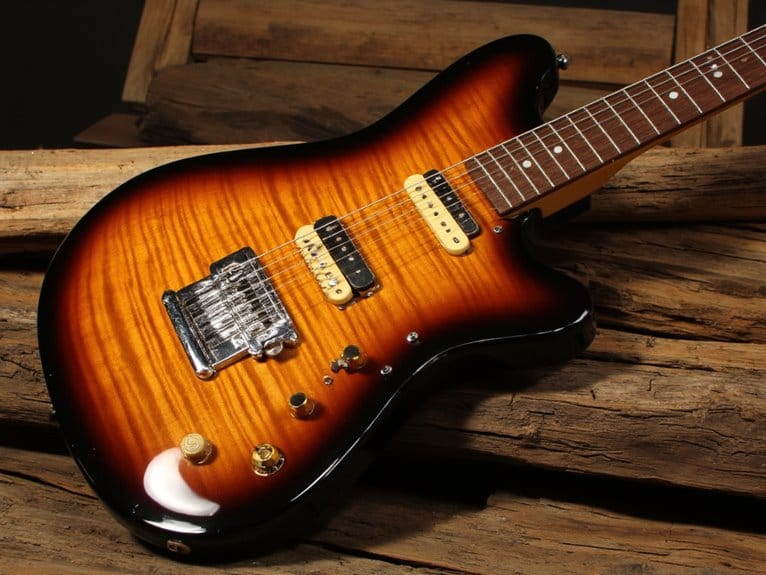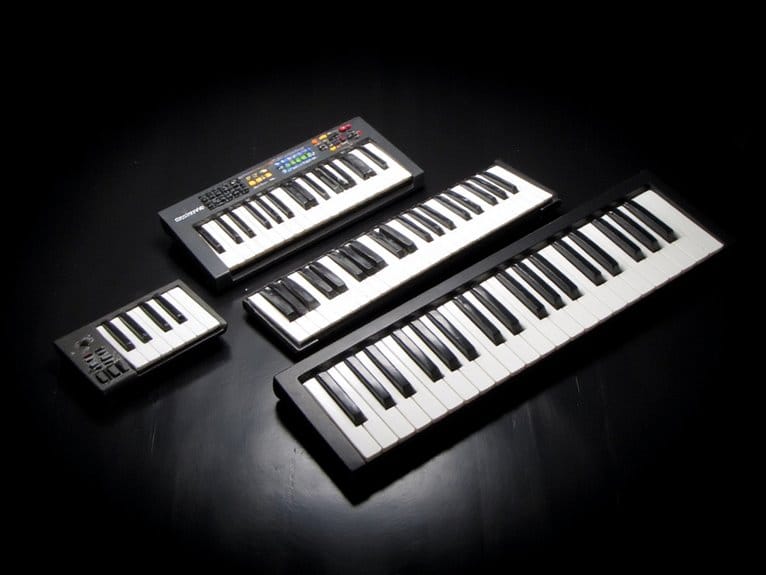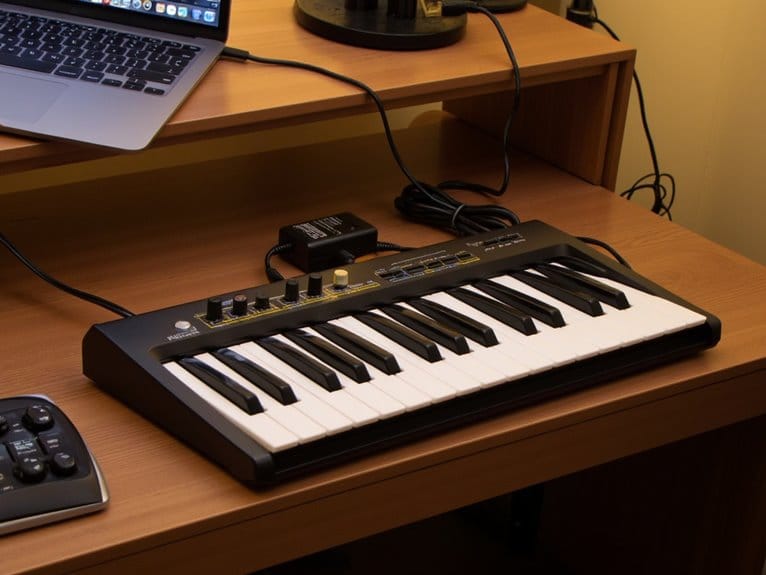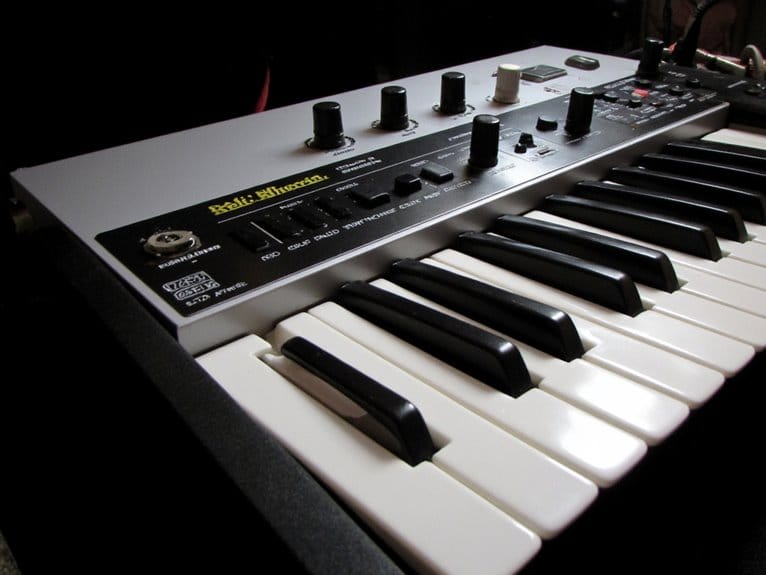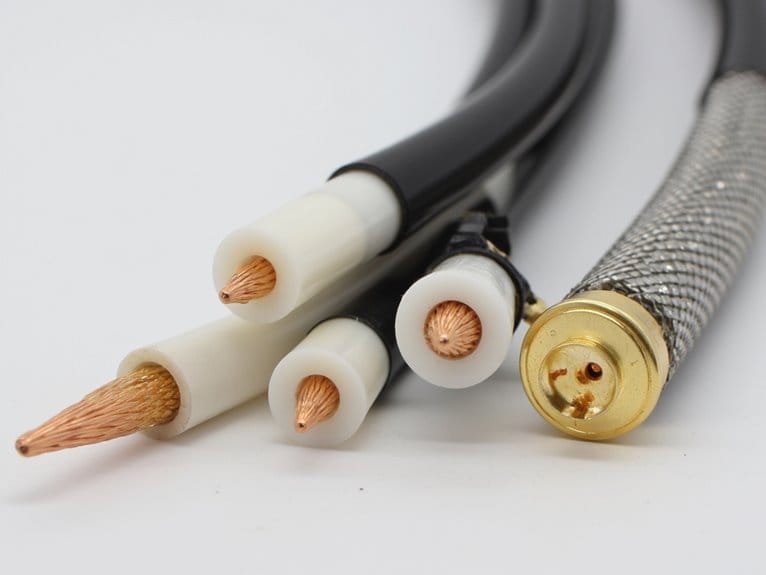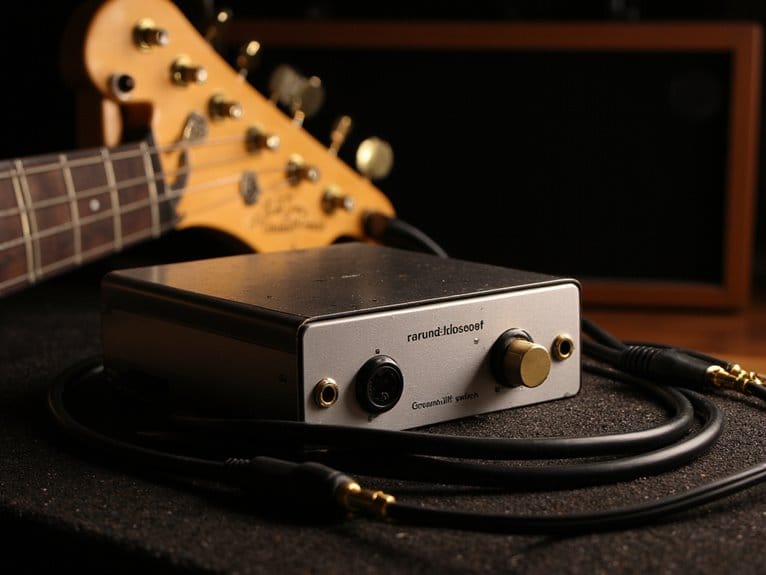Fender Japan: From Copies to Recognition
When you’re exploring Fender Japan’s evolution, you’ll discover how Fender brilliantly transformed Japanese copy manufacturers into official partners in 1982, establishing Fender Japan Ltd. to leverage superior Japanese craftsmanship rather than compete against it. You’ll find that manufacturers like Fujigen produced 5,000 guitars monthly with tighter tolerances and flawless finishes, often surpassing American standards while maintaining authentic vintage-spec components and traditional Fender DNA, creating highly sought-after collectibles that challenge conventional notions about geographic manufacturing superiority.
We are supported by our audience. When you purchase through links on our site, we may earn an affiliate commission, at no extra cost for you. Learn more.
Notable Insights
- Fender Japan formed in 1982 to counter Japanese manufacturers producing unauthorized Fender copies by leveraging local expertise.
- Japanese craftsmanship achieved superior quality with tighter tolerances and vintage-spec components, often surpassing American manufacturing standards.
- Cross-cultural collaboration produced unique limited-edition models like paisley Telecasters and the hybrid Jag-Stang, expanding Fender’s design vocabulary.
- Early “JV” series models became highly collectible for exceptional build quality and authentic vintage reproductions at accessible prices.
- Strategic partnership transformed potential market threat into competitive advantage, establishing Fender Japan as dominant global collectible force.
The Strategic Birth of an Authentic Alternative in 1982
By the late 1970s, Fender found itself in what I’d call a classic case of being beaten at their own game, watching Japanese manufacturers flood their home market with remarkably well-crafted Fender copies that delivered impressive quality at prices that made genuine American Fenders look overpriced.
These market dynamics forced Fender’s hand, leading to the strategic formation of Fender Japan Ltd. on March 11, 1982, at Tokyo’s Grand Palace Hotel. I’d argue this wasn’t just damage control-it was brilliant brand positioning that transformed potential defeat into competitive advantage.
This partnership allowed Fender to leverage Japanese manufacturing expertise while maintaining their signature designs, particularly for models like the Telecaster Electric Guitar that had become synonymous with the brand’s identity.
Japanese Craftsmanship Challenges American Standards
When you examine a Fender Japan guitar alongside its American counterpart, you’re witnessing what I consider one of the most fascinating quality challenges in modern guitar manufacturing-where meticulous Japanese craftsmanship doesn’t just match American standards but often surpasses them in specific areas that matter most to discerning players.
These craftsmanship nuances become apparent when you notice the flawless fit and finish that Japanese manufacturers like Fujigen achieve, often delivering tighter tolerances than their American counterparts at comparable price points.
Quality comparisons reveal interesting trade-offs: Japanese models feature vintage-spec components like thinner frets and six-screw tremolo bridges that prioritize traditional aesthetics over modern convenience, while their lighter pickup output creates distinct tonal characteristics that many professionals actually prefer for certain musical applications.
This attention to detail mirrors the approach found in budget guitar manufacturing, where companies like Epiphone demonstrate that authentic tone can be achieved through careful selection of traditional materials and construction methods regardless of price point.
Manufacturing Evolution From Fujigen to Dyna Gakki
Behind these remarkable quality achievements lies a fascinating manufacturing story that I’ve traced through decades of production changes, where Fender Japan’s excellence actually stems from two distinct yet equally accomplished Japanese guitar manufacturers whose handover represents one of the most seamless exchanges in guitar industry history.
The Fujigen shift occurred in 1997 after fifteen years of meticulous craftsmanship, when production delays prompted Fender to seek additional capacity. Dyna Gakki output initially required Tokai’s brief assistance during the scale-up period, though this partnership lasted only months.
| Period | Manufacturer | Monthly Output |
|---|---|---|
| 1982-1997 | Fujigen | 5,000 guitars |
| 1997-2000s | Dyna Gakki | 5,000 guitars |
| Brief Gap | Tokai (Limited) | Supplemental |
This shift maintained Fender Japan’s reputation while ensuring continuous production flow.
Global Innovation Through Cross-Cultural Collaboration
While studying the corporate structures that shaped modern guitar manufacturing, I’ve discovered that Fender Japan’s most significant achievement wasn’t just producing exceptional instruments-it was creating an entirely new model for cross-cultural innovation that fundamentally changed how American and Japanese companies could collaborate.
This cultural synergy produced remarkable results between 1982 and 2015, with American and Japanese teams exchanging design concepts that birthed unique limited-edition models.
You’ll find examples like paisley Telecasters, floral finishes, and the Kurt Cobain-influenced Jag-Stang-instruments that showcased creative fusion at its finest.
These hybrid models combined traditional Fender DNA with Japanese aesthetic innovation, expanding the brand’s global design vocabulary while demonstrating how cross-cultural partnerships could enhance both heritage and novelty in ways neither culture could’ve achieved alone.
Building a Collectible Legacy and Market Dominance
This cross-cultural innovation didn’t just create beautiful guitars-it established Fender Japan as a dominant force in the global collectible market, transforming what began as a defensive licensing strategy against Japanese copycat manufacturers into one of the most successful brand partnerships in musical instrument history.
You’ll find that early “JV” series models, particularly those manufactured by Fujigen from 1982 to 1996, command premium prices among collectors who recognize their exceptional build quality and faithful vintage reproductions.
The vintage appeal of these instruments stems from their meticulous craftsmanship, limited production runs, and non-catalog custom models that created niche demand.
Current collector trends show Fender Japan guitars consistently appreciating in value, offering accessible alternatives to expensive American vintage instruments while maintaining cult status.
On a final note
You’ve witnessed how Fender Japan transformed from producing unauthorized copies to earning legitimate recognition through superior craftsmanship, strategic partnerships, and manufacturing excellence. What started as Fujigen’s precise attention to detail evolved into Dyna Gakki’s continued innovation, proving that cross-cultural collaboration can elevate quality standards. Today, you’re looking at instruments that collectors actively seek, guitars that’ve earned their place alongside American originals through sheer merit and consistent performance.

